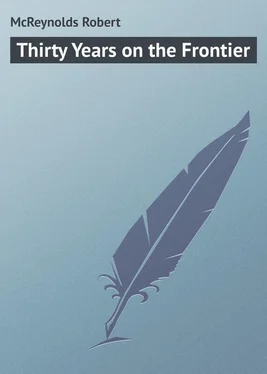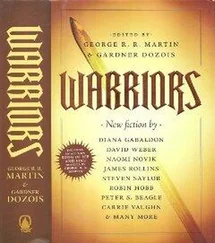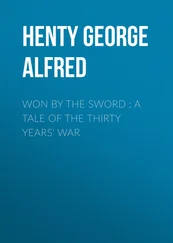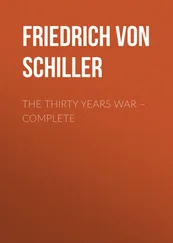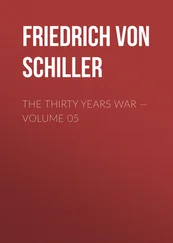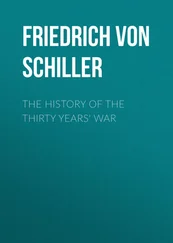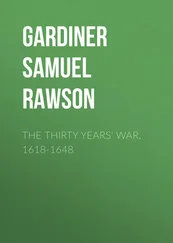Robert McReynolds - Thirty Years on the Frontier
Здесь есть возможность читать онлайн «Robert McReynolds - Thirty Years on the Frontier» — ознакомительный отрывок электронной книги совершенно бесплатно, а после прочтения отрывка купить полную версию. В некоторых случаях можно слушать аудио, скачать через торрент в формате fb2 и присутствует краткое содержание. Жанр: foreign_prose, на английском языке. Описание произведения, (предисловие) а так же отзывы посетителей доступны на портале библиотеки ЛибКат.
- Название:Thirty Years on the Frontier
- Автор:
- Жанр:
- Год:неизвестен
- ISBN:нет данных
- Рейтинг книги:4 / 5. Голосов: 1
-
Избранное:Добавить в избранное
- Отзывы:
-
Ваша оценка:
- 80
- 1
- 2
- 3
- 4
- 5
Thirty Years on the Frontier: краткое содержание, описание и аннотация
Предлагаем к чтению аннотацию, описание, краткое содержание или предисловие (зависит от того, что написал сам автор книги «Thirty Years on the Frontier»). Если вы не нашли необходимую информацию о книге — напишите в комментариях, мы постараемся отыскать её.
Thirty Years on the Frontier — читать онлайн ознакомительный отрывок
Ниже представлен текст книги, разбитый по страницам. Система сохранения места последней прочитанной страницы, позволяет с удобством читать онлайн бесплатно книгу «Thirty Years on the Frontier», без необходимости каждый раз заново искать на чём Вы остановились. Поставьте закладку, и сможете в любой момент перейти на страницу, на которой закончили чтение.
Интервал:
Закладка:
Before the crown of a single grave had sunk down, Crazy Horse started to cross the valley at midnight with his lodges. The shadow confronted his band and mocked them, and as the red men hurried along in the darkness, vividly recalling the mad charge of the cavalry, the strange shadow skulked along with the column and fired shot after shot into the band. They fired at it and rushed out to capture it, but it disappeared, as shadows do. Two squaws, a child or two, an old man and two warriors fell by the bullets which the shadow fired. From that time the red men avoided the valley as white men avoid a pest. They would not cross it or skirt it, even at high noon when the sunshine beat down upon the graves.
Texas Jack, the famous scout in the employ of the army, and a companion, in the late autumn of 1876 crossed the lonely battleground and halted long enough to see that the graves had not been disturbed. They saw the path of the sentinel leading from grave to grave. They saw the skeletons of the red men slain by the shadow. They saw the shadow itself. They were leaving the valley when their ears were greeted by a wild laugh, and from a bed of rank grass and dry weeds a quarter of a mile away they saw the shadow beckon them to come forward. The shadow was a man – a tall, gaunt, heavy bearded and long-haired human being dressed in rags that once had been an army uniform. He held up in the air and shook at them a carbine and a sabre, and when they galloped away, he sent a leaden ball whistling over their heads.
This was the last time this trooper was seen alive, no doubt he was bereft of reason, and believed himself called upon to avenge his comrades and so lurked in the valley, living like the wild beasts around him and missing no chance to strike a blow.
Some years later, when peace was restored and Crow Dog with his son and two warriors were hunting buffalo on the Little Big Horn, they were themselves pursued by a hostile party of Crow Indians. They took refuge among the shelving rocks along the river. Far into the deep recesses, where the waves and winds for centuries had hollowed out a chamber, they found a skeleton. By its side lay a carbine, two revolvers and a long cavalry sabre; about the neck was a delicately wrought chain with a gold locket attached. This and some other trinkets they carried away. After a lapse of fourteen years from the time Custer and his soldiers fell, these same Sioux Indians were again on the war path in the Bad Lands of South Dakota. Custer’s old regiment was there, too. Many of them had fought with Reno and Benteen on that fateful 25th of June, and by the chance of war it was a part of their command under Colonel Forsythe who fought the battle of Wounded Knee. Among them was Charles Wilson, the beardless boy, who rode away with Reno, whilst his friend Jim Bristow followed Custer. No longer a boy, but a bronzed and bearded soldier who had stood the chance of fate in many an Indian fight.
After the battle, when they were gathering up the dead Indians frozen stiff by a four days’ blizzard which raged with wild fury over the plain, there was found about the neck of a young warrior a locket and chain. Wilson curiously examined the trophy and found upon opening it, the photograph of Jim Bristow on one side and upon the other the sweet face of the girl who had promised to be his wife. The young brave from whose neck the locket was taken was found to be the son of Crow Dog, who had married into Big Foot’s band, and this blood-stained bauble, which had at last found its way into the hands of Bristow’s friend as he had intended when they parted, and all the circumstances connected with it, revealed at last the identity of the shadow-scout who kept the midnight vigils over the graves of Custer’s heroic dead; who when the chill blasts of the northern winter had come, had crept into his lair among the rocks and far from the cottage where the voice of love had pleaded so long for his return, with the smoke of battle still before his eyes, and with the shouts and shots of that dreadful day still ringing in his ears, had died alone.
Wilson stood by my side a week later as a heavy army wagon rolled into Pine Ridge agency bearing the body of Sitting Bull, the great war chief, who had directed and led the fight on Custer’s men. When the wagon halted, Wilson drew the canvas cover from the dead chief’s form and gazed long at the bronzed, cruel face, which even in death, was magnificent in the strong drawn lines of unrelenting hatred. There was a cold glint of light in Wilson’s eye as he took one last satisfied look at this dead monster of the plains and turned away to keep his word given fourteen years before to his comrade – Jim Bristow – the last survivor of that awful massacre on the Little Big Horn.
VI
INDIAN FIGHT IN COLORADO
Old “Daddy” Stephenson sat in the shade of the ranch house, squinting his one eye toward the north, the other eye having been shot out a few years before. His squaw was boiling the leg of an antelope in a pot that swung under a tripod of sticks nearby, when “Doc” Kinnie and Charley Hayes rode up.
“Here’s yer Injun,” shouted “Doc,” as he untied his lariat from a blanket and let the bloody head of an Indian roll on the ground near Stephenson’s feet.
The old squaw came over, took a look, and, uttering a long, doleful sound like the cry of a wounded wolf, ran inside and grabbing her blanket, started for the hills, chanting a dismal wail peculiar to her people when in distress.
“You fellows have played billy hell; you’ve killed my brother-in-law,” calmly remarked Stephenson as he refilled his pipe and again cast his one eye toward the north.
“And the best thing you can do is to hit the trail while you are wearing your scalps,” he continued after a pause of several minutes.
At that moment the old man’s half Indian boy and myself came up from the corral.
This incident furnished the cause for an ugly Indian fight which occurred on Rock creek, northeastern Colorado, on June 12, 1877.
“Doc” Kinnie, Charley Hayes and myself had come from Deadwood to Cheyenne as an escort for a stage coach carrying the Wells-Fargo express, when Stephenson offered us better pay to work on his cattle ranch.
Four days before the incident of the bloody head, Stephenson had missed seven head of cattle and had struck the trail of one Indian who had driven them off. He rode to the ranch house in high rage and offered Kinnie and Hayes one hundred dollars if they would recover the cattle and kill the Indian. In five minutes they were in their saddles riding to the point where Stephenson indicated the trail. I did not join them, as Stephenson insisted that two were enough. Kinnie and Hayes had no difficulty in following the trail of the stolen cattle and were close on them the next evening. Not caring for a night attack they went into camp, eating their bacon raw rather than make a fire. They were in their saddles at the first grey streak of dawn and within an hour came upon two Indians eating their morning meal in a canon, while the missing cattle were grazing five hundred yards beyond.
It was a complete surprise to the Indians, and in the melee that followed one of them was killed and the other made his escape. It then became a question of how best to prove to Stephenson that they had killed the Indian without the burden of taking him back.
Kinnie, who had been a medical student in Ohio before a certain escapade had caused him to emigrate to the west, suggested the amputation of the dead Indian’s head as the handiest way, and also suggested that they keep quiet as to the Indian who got away, lest the old man should only want to pay one-half of the promised reward.
Hayes stood guard while Kinnie cut and twisted the Indian’s neck until the head separated from the body. He then rolled it in the Indian’s blanket and carried it on the pommel of his saddle until the afternoon, when he rolled the ghastly trophy out on the ground in front of Stephenson and his squaw wife.
Читать дальшеИнтервал:
Закладка:
Похожие книги на «Thirty Years on the Frontier»
Представляем Вашему вниманию похожие книги на «Thirty Years on the Frontier» списком для выбора. Мы отобрали схожую по названию и смыслу литературу в надежде предоставить читателям больше вариантов отыскать новые, интересные, ещё непрочитанные произведения.
Обсуждение, отзывы о книге «Thirty Years on the Frontier» и просто собственные мнения читателей. Оставьте ваши комментарии, напишите, что Вы думаете о произведении, его смысле или главных героях. Укажите что конкретно понравилось, а что нет, и почему Вы так считаете.
